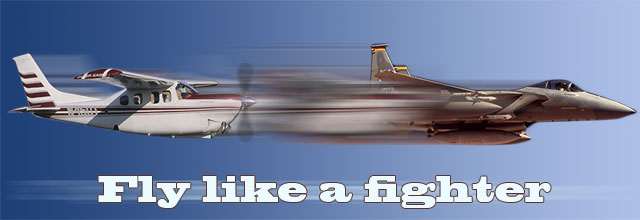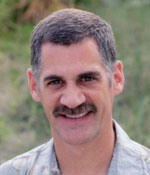
The Crow Valley bombing range was only about 10 miles from Clark Air Base in the Philippines. During Cope Thunder flying exercises, one team of fighters was tasked with attacking targets on the range, often with live ordnance, while the other team was supposed to defend against the attack. The defensive counter air (DCA) aircraft would set up their combat air patrols (CAPs)—holding patterns near, but not over, the range—prior to the vulnerability window. With both sides having tactical controllers to assist, using either ground or air-based radars, everyone was able to get a picture of the air battle as it developed.
 A normal day during Cope Thunder involved a morning and afternoon battle, with up to 70 aircraft, and often included a noon “mini Thunder” with 12 to 20 fighters. On my rotation to fly in the mini Thunder, we had four F-15s tasked with DCA against 12 to 14 fighters that were to attack targets at Crow Valley. My flight lead wanted to try something different. Instead of launching early into our CAPs—where the tactical controllers and attacking fighters would see us—we taxied to an angled taxiway at the approach end of the runway, contacted our tactical controller, and waited.
A normal day during Cope Thunder involved a morning and afternoon battle, with up to 70 aircraft, and often included a noon “mini Thunder” with 12 to 20 fighters. On my rotation to fly in the mini Thunder, we had four F-15s tasked with DCA against 12 to 14 fighters that were to attack targets at Crow Valley. My flight lead wanted to try something different. Instead of launching early into our CAPs—where the tactical controllers and attacking fighters would see us—we taxied to an angled taxiway at the approach end of the runway, contacted our tactical controller, and waited.
Eventually we started getting traffic calls for the opposing aircraft; joining up about 70 miles away, then approaching from north to south at 60 miles; then 50, 40, and 30 miles. Time to launch! To put us in the right formation, No. 2 took off first, followed by lead, then No. 3, then me (No. 4). When I was one mile in trail going 450 knots, I called “ready” as I was briefed. The lead then called for us to simultaneously make a hard 90-degree turn to the left, which put us in our normal line abreast formation.
We quickly found our targets on our radars and started launching missiles. After our displays showed missile time out, we each stepped from one target to the next until we had the whole wave covered. The other side never fired a single shot against us. The time from brake release to firing our last missile was about 3.5 minutes—definitely the shortest Cope Thunder mission I know of.
The debrief was rather enlightening, but also as expected. After the other side joined up 60 miles from Crow Valley, their tactical controller could only report “negative contact.” This was the same report almost all the way to the range. At some point, most of them figured we were not going to show up. They discounted us and concentrated on their bombing runs. They let their guards down.
Just like those fighters didn’t see or hear us until it was too late, don’t think that a quiet CTAF frequency means nobody is there. We know about the dangers of spinning propellers, inadvertent flight into IMC, fuel exhaustion, and get-there-itis. In my previous hangar with only nine inches of wingtip clearance on each side, putting the Cessna P210 back inside after a flight was often the most exciting part of the day. From the time you enter your hangar door until the time you leave when your flight is done, be vigilant. Don’t let your guard down.
Larry Brown of Colorado Springs, Colo., is a retired Air Force F-15 pilot who is using the lessons he learned as a fighter pilot as a GA pilot in his Cessna P210. Brown, who has 2,700 hours total time during his 33 years of flying, also was an instructor pilot and flight examiner in the Air Force T-38 and instructor pilot in the T-52, the military’s version of GA’s Diamond DA40. See previous installments of “Fly like a fighter.”
'True tales from the cockpit' at Summit
Enjoy the lessons learned that retired U.S. Air Force fighter pilot Larry Brown shares from his military career and applies to his current general aviation flying? Meet Brown in person and get the full story behind his F-15 flights during AOPA Aviation Summit in Fort Worth, Texas. Join Brown for "Fighter pilot: True tales from the cockpit" on Oct. 10 from 1:30 to 2:45 p.m. in the Fort Worth Convention Center Room 201.



